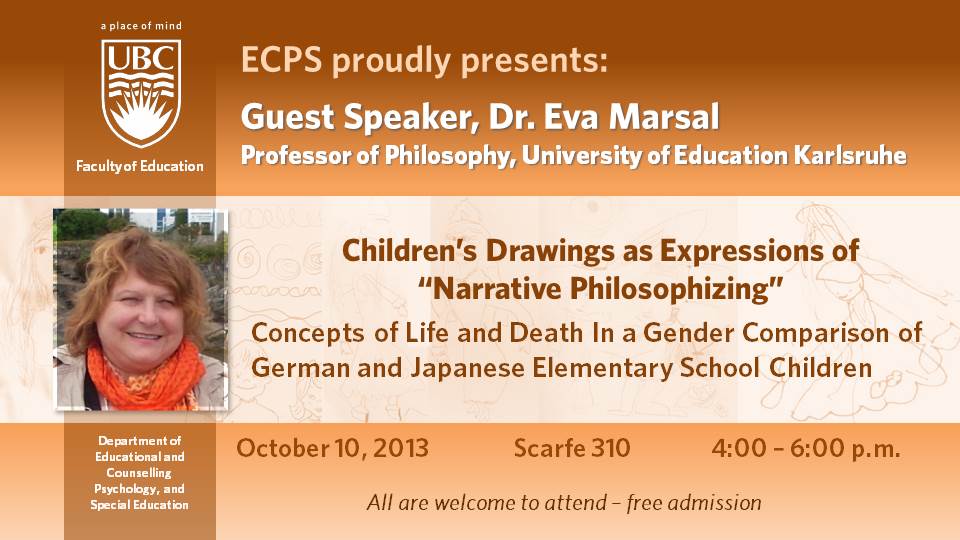Children’s Drawings as Expressions of “Narrative Philosophizing” Concepts of Life and Death In a Gender Comparison of German and Japanese Elementary School Children
Neville Scarfe, room 310
Dr. Eva Marsal is a full Professor of Philosophy at the University of Education Karlsruhe, Germany
Abstract:
One of Kant’s famous questions about being human asks, “What may I hope?” This question places individual life within an encompassing horizon of human history and speculates on the possibility of perspectives beyond death. In our time mortality is generally repressed, though the development of personal consciousness is closely linked to realization of one’s finitude. This raises especially urgent questions for children, but too often they are left to deal with them alone.
From the time awareness begins, knowledge that death can occur at any moment is one of the a priori determinants of being alive; that is, life is structured in advance by its future pastness. (Scheler, Heidegger, Fink, Simmel). According to Max Scheler, death reveals itself as a necessary and manifest constituent of all possible inner experiences in the life process. The cultural and individual interpretations of death’s meaning and consequences derived from this insight opened up an ample space for imagined possibilities of “continued existence,” which affected approaches to life.
In our research project “Inochi – The Concept of Life after Death in Children’s Construction of the World. A German-Japanese Comparison,” carried out with German and Japanese research support, we examine concepts developed within the community of inquiry concerning “the individual’s afterlife” as soul, angel, animal, star, etc. In this we want to examine whether a globalized media environment leads to a cultural convergence in children’s ideas, and whether there are differences between views of girls and boys. Relevance of ideas about death is seen in the example of Japanese children who, believing in reincarnation, chose “killing oneself” with relative frequency as a problem-solving strategy. Our contribution will present children’s imaginings through their drawings created within this framework, since these, especially for the Japanese children, can be interpreted as the expression of “narrative philosophizing.”
